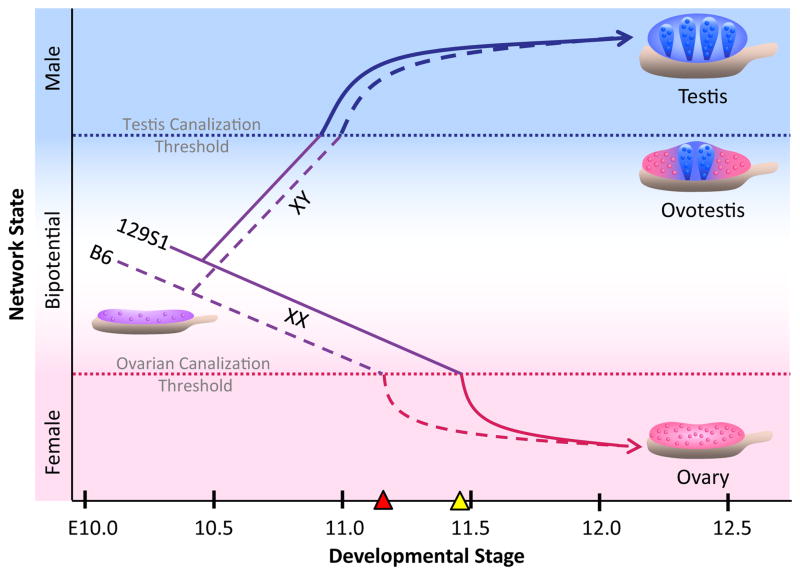Figure 4.
Sexual fate of the XY gonad depends on the number of specified pre-Sertoli cells (i.e., cells that are expressing SOX9 above a differentiation threshold) present in the gonad when the bipotential window closes. This critical timepoint appears to be set by the expression of female pathway genes in the bipotential XY gonad. Once the female pathway has progressed to a “point of no return” (the Ovarian Canalization Threshold, OCT; denoted as a red dotted line), the number of specified pre-Sertoli cells in the XY gonad must surpass a threshold (the Testis Canalization Threshold; blue dotted line) to direct testis development. If the number of pre-Sertoli cells does not meet this threshold by this critical timepoint, the XY gonad full or partially sex reverses to an ovary or ovotestis. In XX gonads, the female pathway surpasses the OCT and is canalized toward ovarian development. Variation in the expression of female pathway genes in XY gonads among inbred strains may affect the duration of the bipotential window. For example, the higher expression or earlier onset of female pathway genes in B6 XY gonads (dashed purple line) relative to 129S1 (solid purple line) may cause the bipotential window to close earlier in B6 (denoted by red triangle; compare to yellow triangle = critical timepoint in 129S1). In XX gonads, the female pathway proceeds past the OCT and is canalized toward ovarian development.

